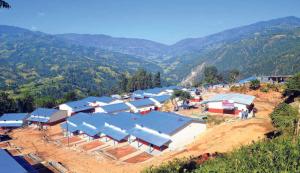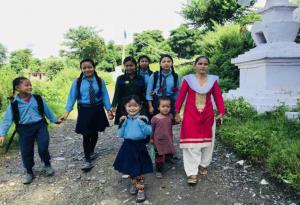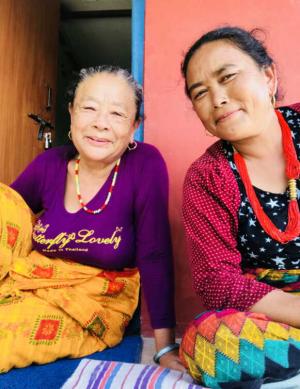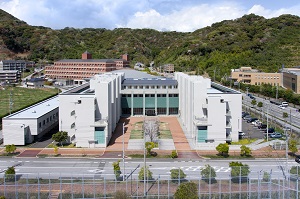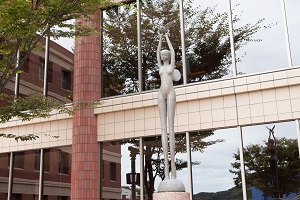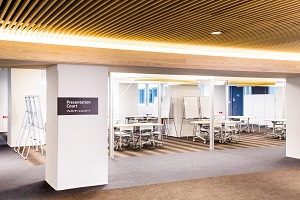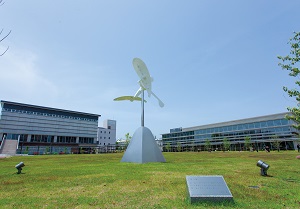本文
【University of Kochi】 Living Environment and Health Issues of Disaster Survivors in the Long-Term Evacuation Stage after the Nepal Earthquake 2015(2018年8月12日-25日)
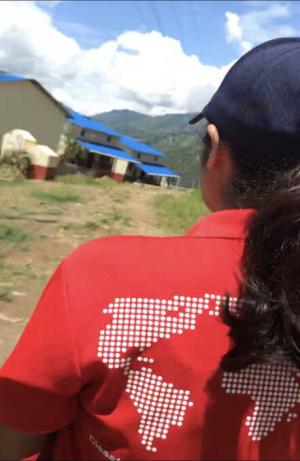
A massive earthquake of magnitude 7.9 struck Nepal, which was the worst quake to strike the country in more than 80 years. On 12th May 2015, another 7.3 magnitude strong aftershock caused further damages and sufferings. Sindhupalchowk district was one of the worst affected districts as a result of the earthquake, and “Giranchaur” was one of the affected communities in Sindhupalchowk. Following disaster, residents were staying at the shelter made by tin. “Dhurmus Suntali Foundation”, led by comedian duo Sitaram Kattel (Dhurmus) and Kunjana Ghimire (Suntali) of Nepal, constructed the integrated community in Giranchaur named as “Giranchaur Integrated Settlement”. This settlement consisted of 65 earthquake-resistant, disable-friendly and child-friendly houses; five children parks and a community building for the survivors of Melamchi-12, Sindhupalchowk.
As a part of disaster nursing practicum, Giranchaur Integrated Settlement was visited for two weeks, dated 12th August to 25th August, 2018. The objectives were to understand the living environment and identify the needs and health issues of survivors in the long-term after Nepal earthquake 2015, and to provide need basis community health education and promotion for survivors. Accordingly, living environment and health situations were assessed and the need based care was given.
The major identified health issues were seasonal fever and common cold, skin allergies, chronic obstructive pulmonary disease, rheumatoid arthritis, and hypertension. No any disaster induced mental health problems were identified. Majority explained that they were very happy and lucky to get new home to live in. Other prevalent issues were issues of personal hygiene, income-generation, migration of young people, smoking, and female violence as a non-diagnosed issue. Alcoholism was prevalent which wasn’t a disaster induced issue but rather was entailed as a cultural value in the community. Lack of accessibility to medical health service was identified as a major problem, where survivors needed to walk 4 kilometers to reach up to the health post. On contrast, mutual assistance was identified as the strength of the community.
The nursing interventions carried out were monitoring vitals, first aid for minor injuries, treatment of minor symptoms and referrals of major diagnosed cases. Need basis health education was provided regarding personal hygiene, care of rheumatoid arthritis, hypertension, deep breathing and coughing exercises, women and girls counselling on violence and empowerment. Young girls were counselled against the early marriage, and made aware about the girls trafficking.
Environmental sanitation program was targeted to children. Audio-video session was carried out about the natural disasters, and harmful effects of smoking and alcoholism. Additionally, school visit was also performed, and discussions were made on the hygiene and students’ absentees issues with the Principal and teachers. A collaborative meeting with leaders was performed to establish a medical health facility with the available ‘community health worker’ in that settlement, so that the common health issues like fever, common cold, diarrhoea, first aid and so on could be readily addressed within the settlement. A final discussion was carried out in Kathmandu with the main foundation to discuss the activities carried out in the settlement.
Disaster management, even in the long-term evacuation phase, is a multidisciplinary activity involving a number of departments or agencies. Training, capacity building with a focus on mutual assistance, and awareness generation, particularly that of the vulnerable segments of population and women, need to be emphasized as necessary for health security and sustainable disaster risk reduction.
(by Sushila Paudel)
